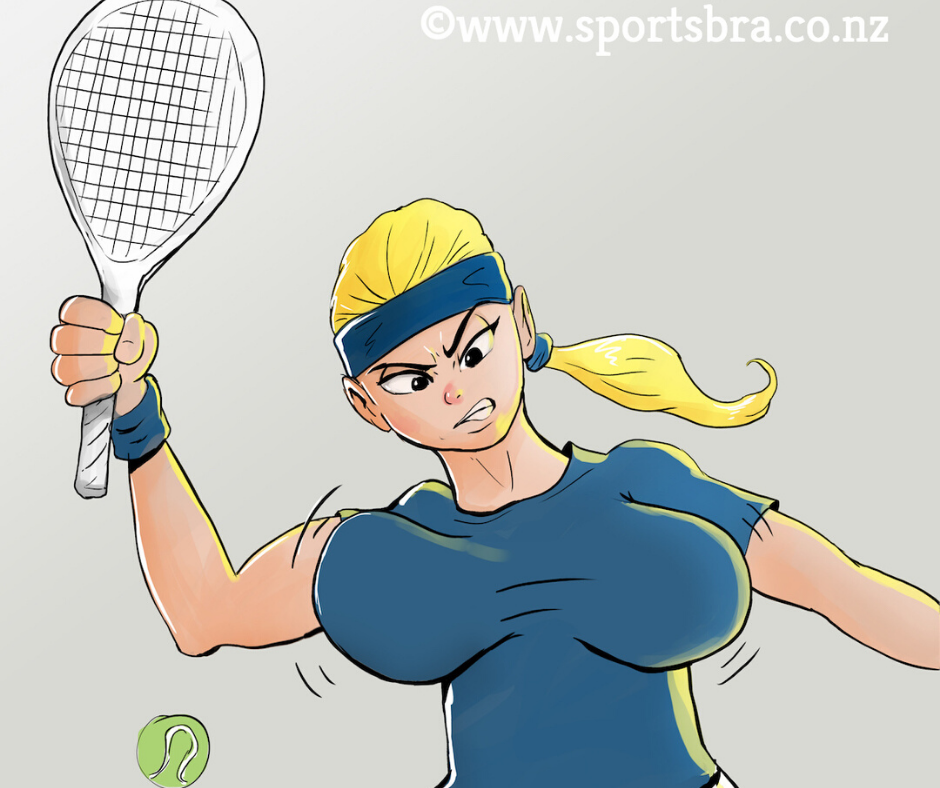
How a well-fitted sports bra can reduce breast pain
Share
The movement of a woman's breasts during exercise can range from 4cm during a walk to 15cm when running, researchers have found.
This multidirectional movement can cause breast pain, according to research by the University of Portsmouth.
Not only can exercising with poorly supported breasts cause pain and sagging, it can cause embarrassment and put women off physical activity.

A survey by the university's Research Group in Breast Health (RGBH) found breasts were the fourth biggest barrier to exercise for women after lack of motivation, time and poor health.
Professor Joanna Scurr, who heads the RGBH, says exercising with a well-fitted sports bra is just as important as running in the right type of trainers.
"Regardless of breast size, a well-fitted sports bra can make the world of difference to your workout, as well as your general health and wellbeing."
- What's the problem with bras?
- How can exercise cause breast pain?
- Why do breasts sag?
- How do breasts move during exercise?
- What's the importance of a well-fitted bra?
- Which sports bra is right for me?
- How often should I replace my sports bra?
- When should I wear a sports bra?
- How do I get the right fit?
What's the problem with bras?
Research suggests most women – perhaps more than 70% – wear the wrong bra size. This may result in pain, discomfort and irreversible sagging.
Dr Jenny White, from the RGBH, says women need better advice on getting the right fit. "The most common mistake is to wear the underband too loose and the cup size too small," she says.
"It's important to advise women on the best fit, rather than using a tape measure to dictate their bra size."
How can exercise cause breast pain?
The exact mechanics are not entirely understood, but it's thought exercise, especially high-impact exercise like running or jumping, places tension on the supporting structures of the breast, which can result in pain.
Why do breasts sag?
There are no muscles in the breast. The only supporting structures are the skin and the Cooper's ligaments – thin, paper-like tissues that weave throughout the breast and attach to the chest wall. It's thought sagging, which is irreversible, occurs when these ligaments are overstretched.
How do breasts move during exercise?
The breast has limited natural support, and any unsupported movement causes the breasts to move: up-down, in-out, and side-to-side. This multidirectional movement has been shown to increase from 4cm during walking to 15cm during running in a study of women exercising without a bra. And breast motion is not just an issue for larger-breasted women.
What's the importance of a well-fitted bra?
Whether it's for exercise or not, a correctly fitting and supportive bra can alleviate breast pain and help prevent back and neck pain, as well as irreversible breast sag.
Which sports bra is right for me?
There are three types of sports bra: compression (pushing the breast against the chest), encapsulation (lifting and separating each breast) or a combination of both.
Not every bra suits every person, and wearing the wrong size or style can reduce support. Dr Brown says: "You should always try on a sports bra before you buy it. Jump around in the fitting room (or at home before removing tags) to make sure it is giving you the support you need for your chosen activity."
How often should I replace my sports bra?
It's important to replace your sports bra regularly to make sure it's still giving you the best support it can. How often you need to replace your bra will depend on a number of factors, including how often you wear it and how often you wash it. The RGBH recommends you replace your sports bra when you replace your running shoes.
When should I wear a sports bra?
A well-fitted, supportive sports bra is just as important for occasional exercise as it is for regular exercise. It's also important for all types of physical activity, including both low- and high-impact activities, and exercise of short and long duration.
How do I get the right fit?
It's essential that a sports bra fits properly for it to be effective.
The RGBH recommends these simple steps for choosing the right sports bra:
Underband: the band should fit firmly around the chest. It shouldn't slide around as you move, but it shouldn't be too tight as to be uncomfortable, affect your breathing, or make flesh bulge over the band. The band should be level all the way around the chest.
Cup: the breasts should be enclosed within the cups, with no bulging or gaping at the top or sides. If the cup material is puckering, then the cup size is probably too big.
Shoulder straps: the shoulder straps should be adjusted to comfortably provide breast support without being too tight (digging into the skin). The main support for the breast should come from a firm band, not tight shoulder straps.
Underwire: for sports bras that are underwired, the underwire should follow the natural crease of the breasts and not rest on any breast tissue. If the underwire is resting too far down the ribcage (where the rib cage gets slightly narrower), the band size is probably too small.
Content supplied by NHS.UK
